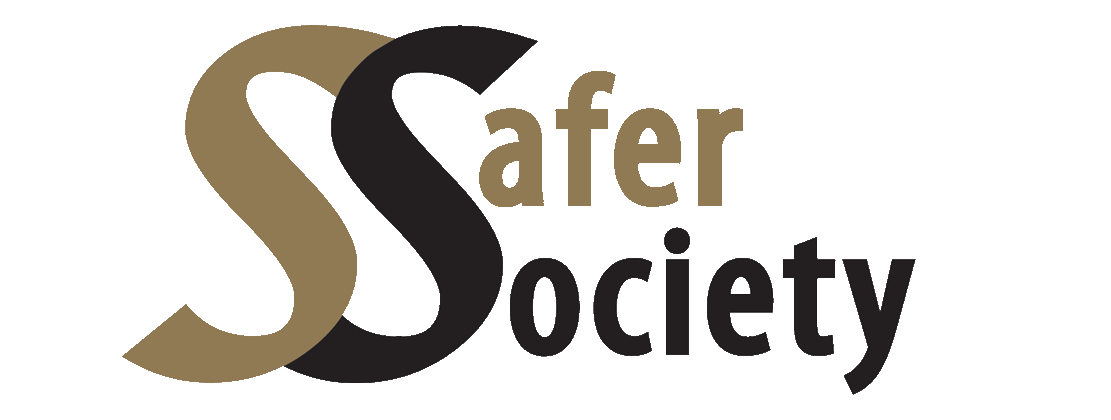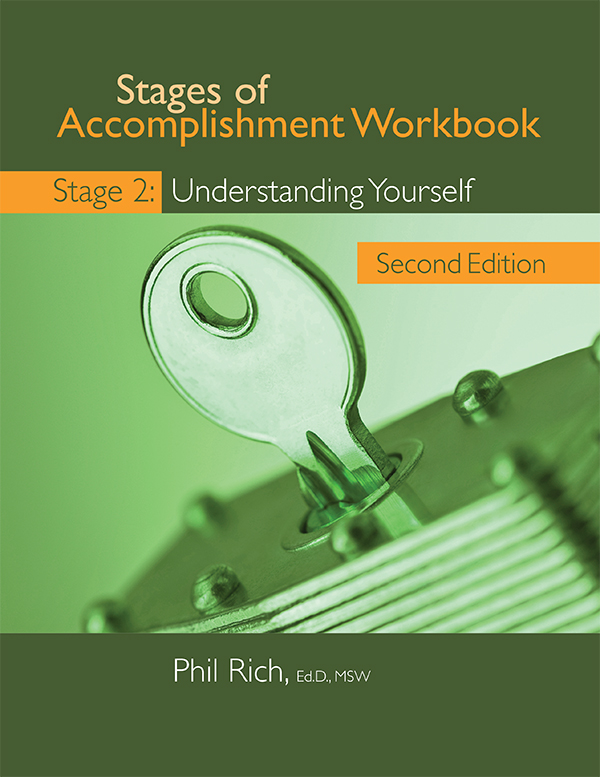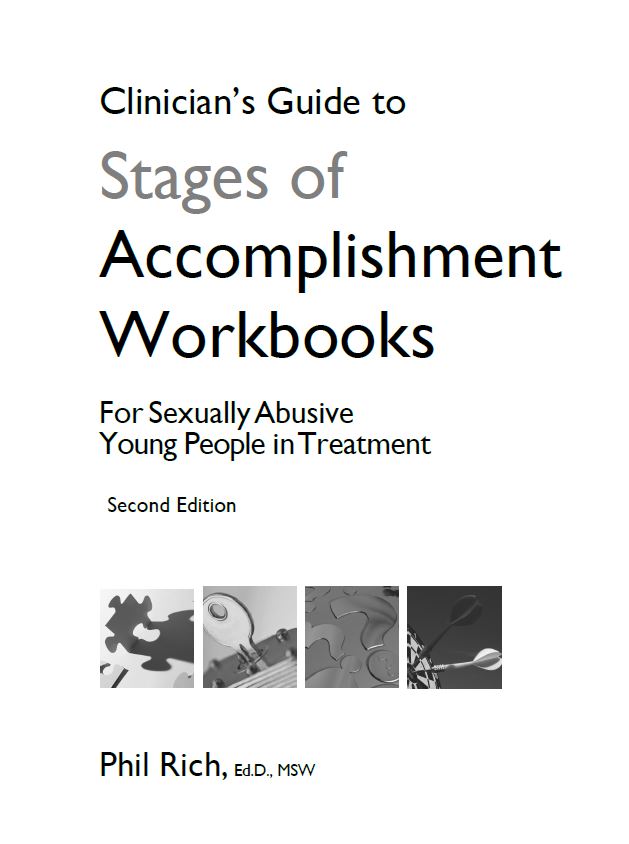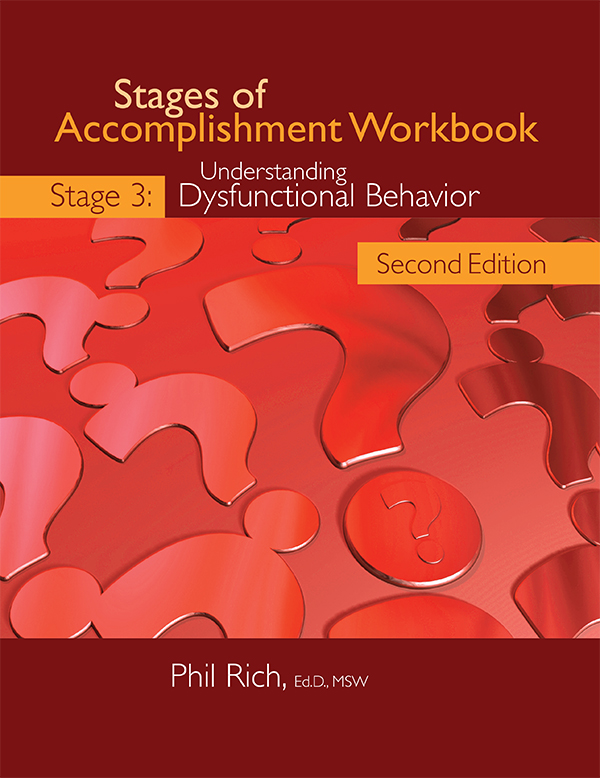Home / Shop / For Youthful Clients / Workbooks for Youthful Clients
Stages of Accomplishment: Stage 1 - Introduction to Treatment
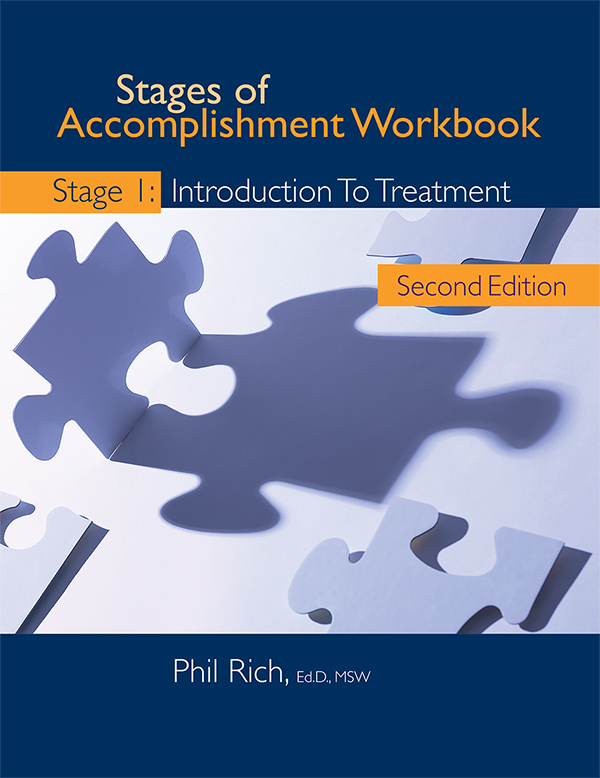
- Description
- Specifications
Stages of Accomplishment
Stage 1: Introduction to Treatment
by Phil Rich
With an aim to foster rehabilitation and pave the way towards a brighter future, the Stages of Accomplishment workbooks help clinicians guide young people with problematic sexual behaviors through a journey of self-discovery. The workbooks are designed to be used as one element of a comprehensive treatment program, although each can be used independently. Clinicians can use the workbooks to extend treatment beyond the therapy session, provide a foundation for discussion and exploration, and engage clients in self-directed learning.
The Stages of Accomplishment Workbook: Stage I - Introduction to Treatment is a vital resource for therapists working with young individuals who have engaged in sexually abusive or inappropriate behavior. This workbook—the first in a series of four—helps clients understand their behaviors and the nature of sexually harmful behavior, the impact of their behavior on others, and how they can make positive changes in their lives.
Although the focus of the Stage 1 workbook is on providing information about what occurs during individual, group, and family therapy, it also stresses the importance of being honest about one's actions and taking responsibility for them, as well as addressing topics such as potential involvement with the legal system and the sexual offender registry. Finally, the workbook explains how being honest with therapists, treatment staff, and oneself is crucial for successful rehabilitation.
Encouraging Self-Reflection
The review sections that follow each chapter have as many as 35 questions to ensure clients understand the information provided. In addition, three tools are provided throughout the workbook that are designed to help your clients understand what they can expect in therapy and help them reflect on their behavior and thoughts. These are:
- Review Questions and Exercises: to reinforce learning and ensure comprehension
- Key Concepts: important terms used in the chapter are clearly defined
- Thinking Points: these questions are designed to encourage self-reflection and can be used by therapists in their discussions with clients.
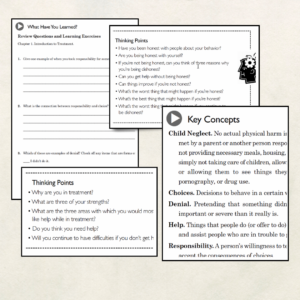 "The therapeutic relationship is one of the most important parts of your treatment. It means building an 'alliance' or a partnership with your therapist."
"The therapeutic relationship is one of the most important parts of your treatment. It means building an 'alliance' or a partnership with your therapist."
"Your team will help you become a safe, productive, and satisfied person who can further build your skills and work to reduce your weaknesses and overcome behaviors that harm others."
Benefits of the Workbook for Therapists
- A Comprehensive Framework: The workbook provides a structured approach to treatment, ensuring all aspects of the individual's behavior and its impact are addressed.
- Engagement Tools: Many practical exercises and questions are included to facilitate engagement and self-reflection.
- Support for Therapists: This section offers clear guidelines on using the workbook effectively within a treatment program, including reviewing and mastering the material. A separate Clinician’s Guide is also available for further guidance.
Additional Important Topics
Twelve treatment steps are outlined, from overcoming denial to living a changed life. These steps provide a roadmap for clients to follow as they work through their treatment and rehabilitation.
Strengths-based rehabilitation is emphasized. It involves restoring individuals to health and shifting attitudes, beliefs, ideas, and behaviors away from those that are ineffective, antisocial, self-destructive, or harmful to others.
Also discussed is the importance of assessing risk and protective factors to prevent future sexually abusive behavior. It explains how therapists use risk assessments and how they can measure the likelihood of reoffending to guide the treatment process.
This is an essential tool for therapists seeking a structured, comprehensive approach to treating young individuals with sexually abusive or inappropriate behavior. It supports both the therapist and the individual in achieving meaningful and lasting change.
New to the 2nd Edition
- Addition of strength-based rehabilitation as a key goal of treatment
- Section on risk factors expanded to include discussion of protective factors
ISBN: 978-1-940234-24-3
Order #: WP213
Price: $15.00
72 pages, softbound
